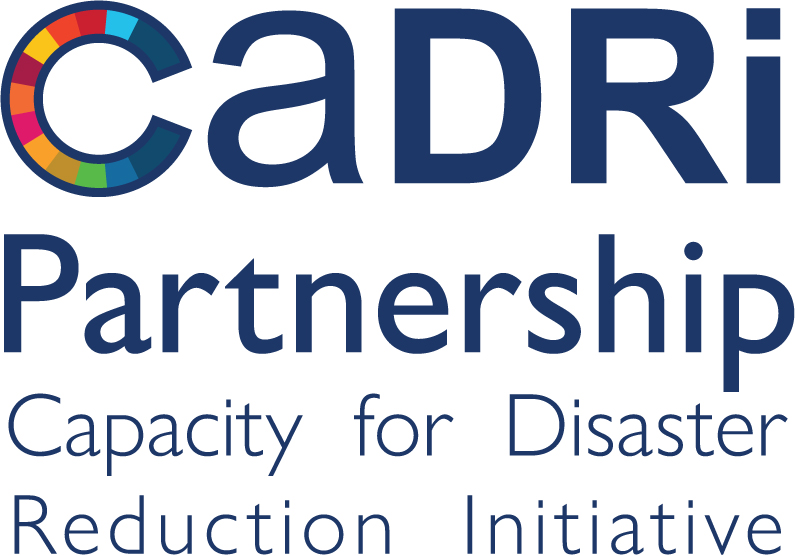-

A decade of
capacity development services
in disaster risk reduction
The Capacity for Disaster Reduction Initiative (CADRI) is a global partnership committed to achieve the 2030 agenda by strengthening countries’ capacities to reduce disaster and climate risks and leave no one behind.
Climate and disaster risks pose a fundamental threat to the achievement of the 17 Sustainable Development Goals (SDGs). Reduction of such risks calls for a holistic approach; an approach working within and across sectors, and at all levels.
CADRI draws upon the diversity of expertise of its members across various social, economic and environmental sectors to offer a unique combination of knowledge, experience and resources to support countries reduce disaster and climate risk across the SDGs.
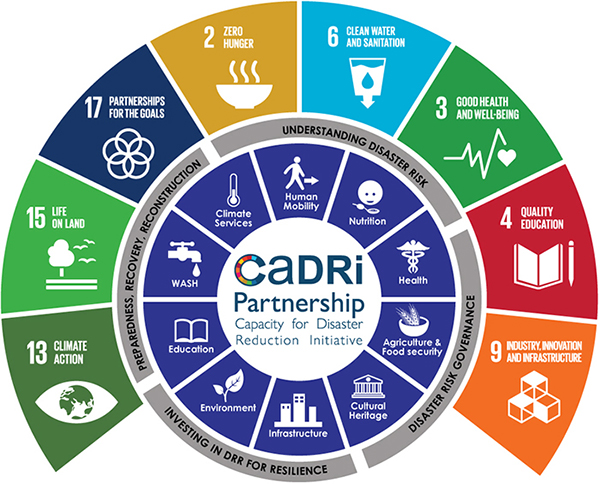
SERVICES
Climate and disaster risk information systems
Deployment of multi-sectoral expertise to set up integrated, multi-hazard country risk information systems that are accessible to users at all levels.
Risk-informed plans and programmes
Deployment of multi-sectoral expertise in support of inclusive and integrated risk-informed plans and programmes.
Preparedness for response and recovery
Deployment of multi-sectoral expertise to optimize country systems for disaster preparedness.
OUR RESULTS
- Capacity assessment and planning of DRR interventions in 28 countries
- Prioritization of DRR interventions in key sectors in 16 countries
- Accelerating legislative, institutional or policy reform in 6 countries
- Skills development and training in 29 countries deploying specialized expertise in key sectors in 6 countries
- UN programming on DRR and resilience building in 6 countries
IMPACT
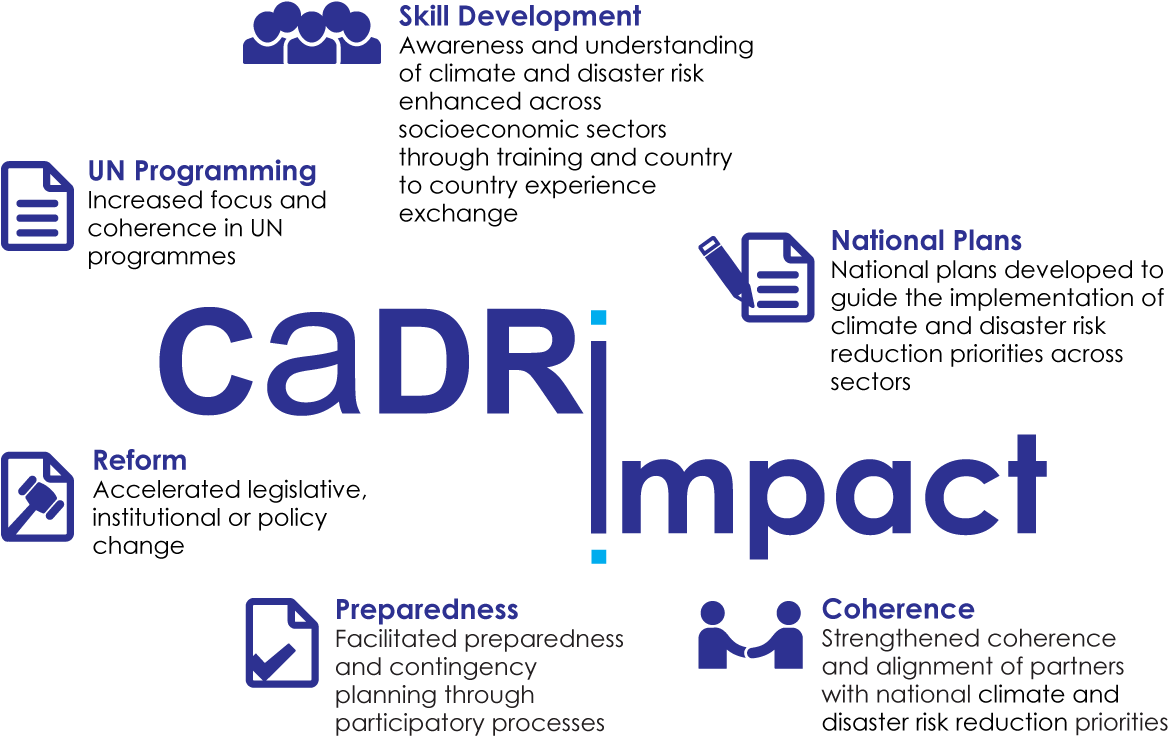
COUNTRIES
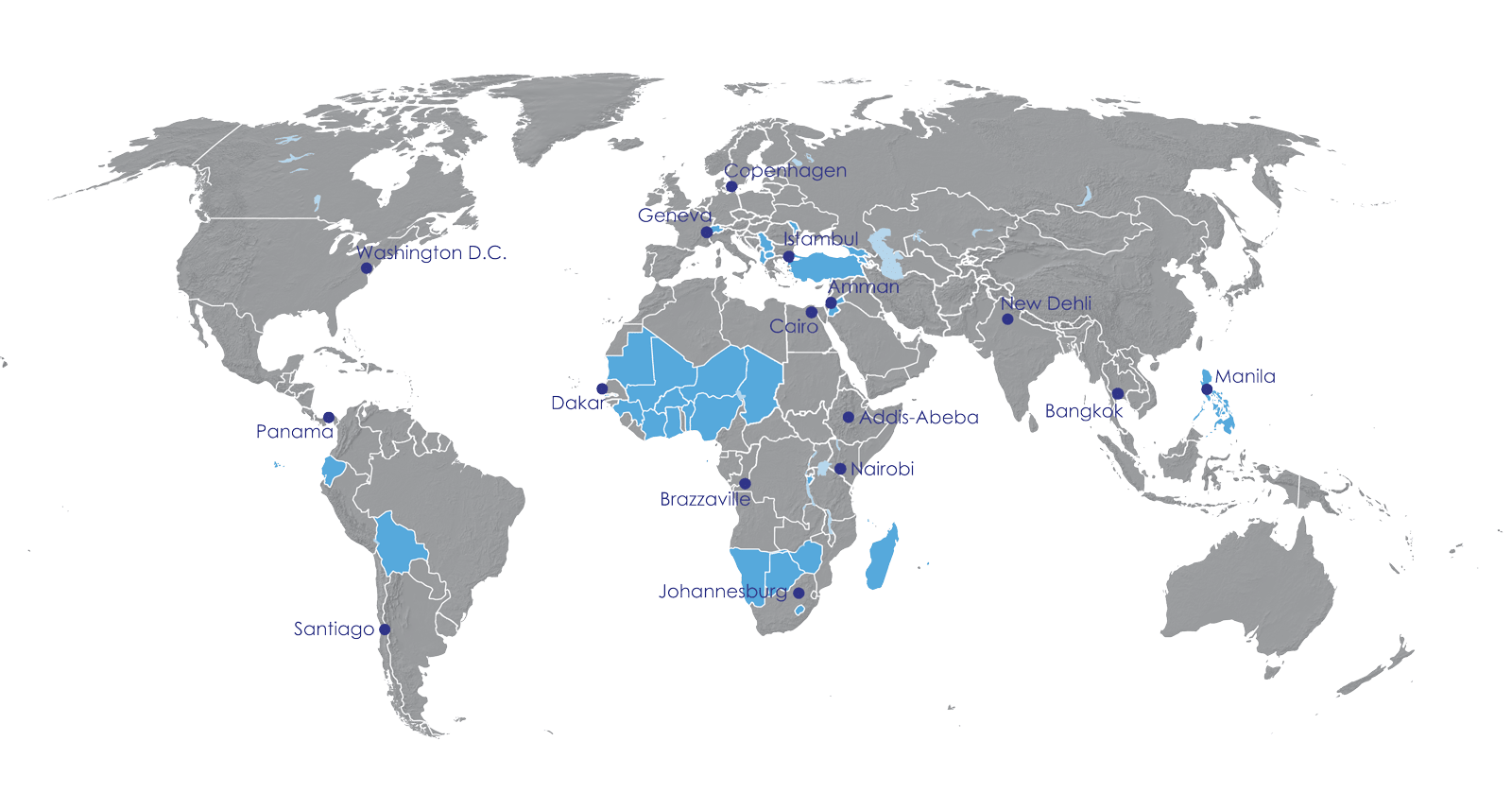
STORIES
Cote d’Ivoire
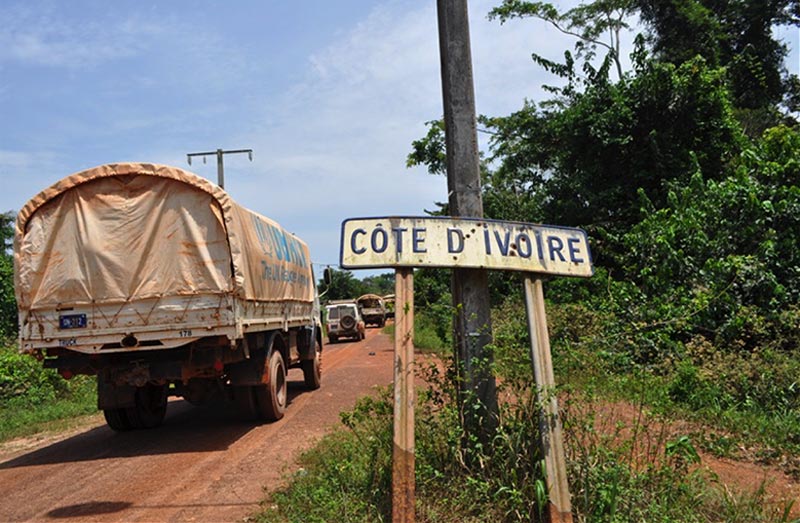
Côte d’Ivoire is the world’s top exporter of cocoa, which, combined with coffee exports, contribute to 40 percent of its GDP. The country’s National Development Plan (2016-2020) is geared towards reaching the middle-income economy status by 2020. Côte d’Ivoire’s economic performance and social welfare can be put under strain by climate and disaster risk. The likely impacts of climate change on crop yield can affect cash crop revenues; uncontrolled urbanization heightens the risks even more. Recurrent flooding and landslides affect densely populated coastal areas such as the capital city, Abidjan.
CADRI Engagement
The Government called upon the UN System and the CADRI Partnership to facilitate a system-wide assessment of national and local capacities for DRR, and to assist with the prioritization of activities. Those priorities were further articulated into a National Plan of Action for Disaster Risk Reduction (2016-2020) validated by the Prime Minister. The Plan contains clear provisions to integrate risk reduction measures into agriculture, forestry, coastal zone management, urban planning and WASH, and health.
CADRI Impact
The CADRI Partnership engagement in Côte d’Ivoire helped create a momentum for reform. Years in the making, the decree establishing the National Platform for Disaster Risk Reduction was signed by the Prime Minister with the view to strengthen coordination between sectors and actors.
To support the implementation of the National Plan, the UN system in Côte d’Ivoire has supported the establishment of a food security monitoring mechanism (including an early warning system), the set-up of a disaster loss and damage tracking system, and a national programme to reinforce the resilience of coastal communities to disaster and climate risks.
With respect to flood preparedness, an inter-sectoral contingency plan is being developed as well as an early warning system programme with the Global Environment Facility.
"The CADRI mission has significantly contributed to strengthening the technical capacities of government experts in DRR and to the understanding of DRR in different government ministries and institutions. CADRI has made a significant contribution in terms of strengthening coordination and coherence among partners (government, UN, NGOs, bilateral and multilateral partners) in the area of DRR. The process has been very inclusive and participative. This way it has helped to clarify “who does what” in DRR."
Abé Delfin Ochou - Ministry of Hygiene, Environment and Sustainable Development and Sendai Focal Point.
Georgia
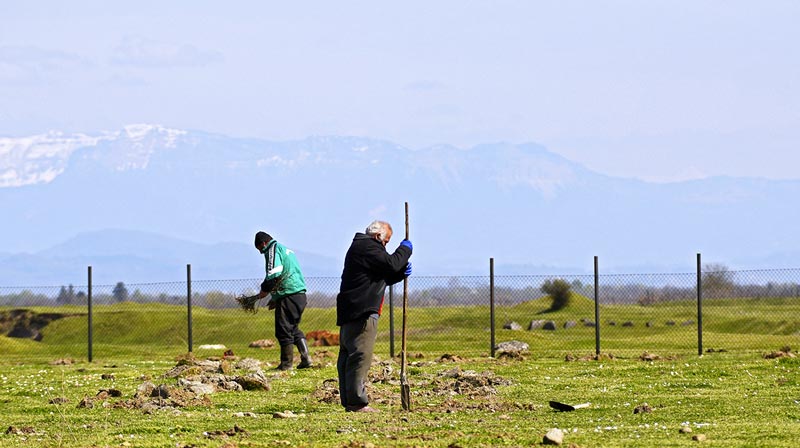
As a mountainous country, Georgia experiences regular floods, landslides, mudslides and avalanches, among other hazards. In June 2015, the capital city of Tbilisi was hit by a devastating flood. The losses amounted to 28 million US dollars. This disaster made Georgians aware that medium-level hazards can have a disproportionate socioeconomic impact.
CADRI Engagement
Triggered by the 2015 floods, the Government spearheaded a comprehensive assessment of national and local capacities, with support from the CADRI Partnership. A participative consultation process unfolded over several months to assist the government in prioritizing key recommendations to strengthen the country’s DRR system.
This planning process resulted in the articulation of a National Disaster Risk Reduction Strategy and Action Plan (2017-2020). The Strategy seeks to establish a more unified and better coordinated DRR system at national and local level. It also provides a common basis for priority setting and for the alignment of government’s and partners’ interventions under a single comprehensive framework.
CADRI Impact
The Government reached a consensus on the urgent need to establish a more comprehensive, nationwide early warning system. In 2018, the Green Climate Fund approved a USD 70 million project scaling-up multi-hazard early warning systems and the use of climate information in Georgia. The project aims to protect 1.7 million people, 40 percent of Georgia’s population, from the impact of climate hazards.
Health system resilience to disaster and climate risks was another area prioritized by the government. It included initiatives such as strengthening of laboratory capacities; training on inter-sectoral coordination for emergency response in the context of an earthquake simulation exercise; updating of the flu pandemic response plan; and planning of a flood preparedness simulation exercise. The World Health Organization (WHO) facilitated training on hospital safety, and conducted an assessment of 50 out of 100 existing private hospitals to ensure that these hospitals are fully functional during emergencies.
"We are most grateful for carried capacity assessment of the disaster risk management system and the national plan of action for capacity development. In order to implement the system for disaster risk reduction, the National Strategy for Disaster Risk Reduction will be based on the carried national plan ofaction for capacity development."
Giorgi Ghibradze - Director for the Operations Center for Crisis Management, State Security and Crisis Management Council.
"To date, risk management in Georgia has largely been reactive, rather than proactive. This has meant large costs to compensate the victims of floods and other natural hazards, the increased number of ‘eco-migrants’ leaving vulnerable areas, and higher costs for recovery."
Levan Davitashvili - Minister of Environment Protection and Agriculture.
Guinea
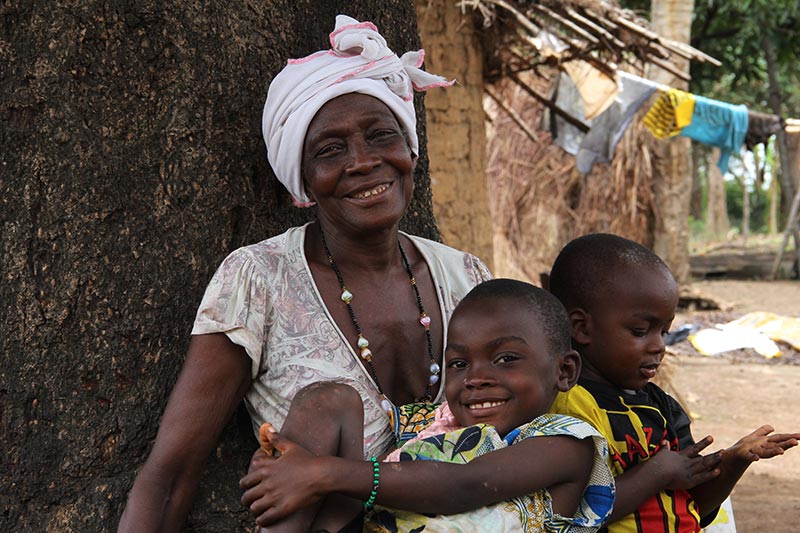
The outbreak of Ebola Virus Disease in 2014 was an unprecedented shock for Guinea as it seriously affected lives leading to a slow down of the country’s social and economic performance. The Ebola crisis worsened the already very fragile economy, with a level of poverty and inequalities estimated at 55%.
The Ebola outbreak revealed the weakness of the health system, and more broadly the deficiencies in the crisis management system across sectors. In the post-Ebola recovery context, the Government took several steps to enhance the legislative, strategic, institutional and operational frameworks related to crisis management to prevent, and be better prepared for, future emergencies.
CADRI Engagement
In 2016, the CADRI Partnership expertise was deployed at the request of the Government to support an assessment of national capacities for DRR, including preparedness for response.
CADRI Impact
The assessment findings and recommendations have informed the National Policy for Disaster and Risk Management validated in April 2017. This Policy provides for a new unified national structure that is currently being established under the guidance of the President’s Office. The future Agence Nationale de Gestion des Risques et Catastrophes will ensure a coordinated implementation of sector policies and measures from prevention to preparedness, response, and recovery.
The new UNDAF 2018-2022 has taken a risk-informed approach with the prioritization of activities pertaining to establishing productive value chains for food and nutrition security, improving early warning systems, and integrating resilience and adaptation practices into local development planning processes.
To strengthen preparedness systems, the UN, working closely with Red Cross, supported the updating of the national contingency plan, simulation exercises to test the effectiveness of preparedness and response mechanisms to epidemics and floods in high risk localities, as well as training workshops in emergency response preparedness.
"This Partnership has allowed us to take stock of existing capacities after the devastating Ebola Virus Disease outbreak and identify recommendations that were relevant and adapted to our context. Government stakeholders were widely involved at all levels. This exercise helped to strengthen good practices of collaboration with partners. The assessment report has been a reference for the government to strengthen the responsibility of every actor in disaster risk reduction."
Denka Keita - Director of Humanitarian Action Service, Ministry of Territorial Administration and Decentralization.
Jordan
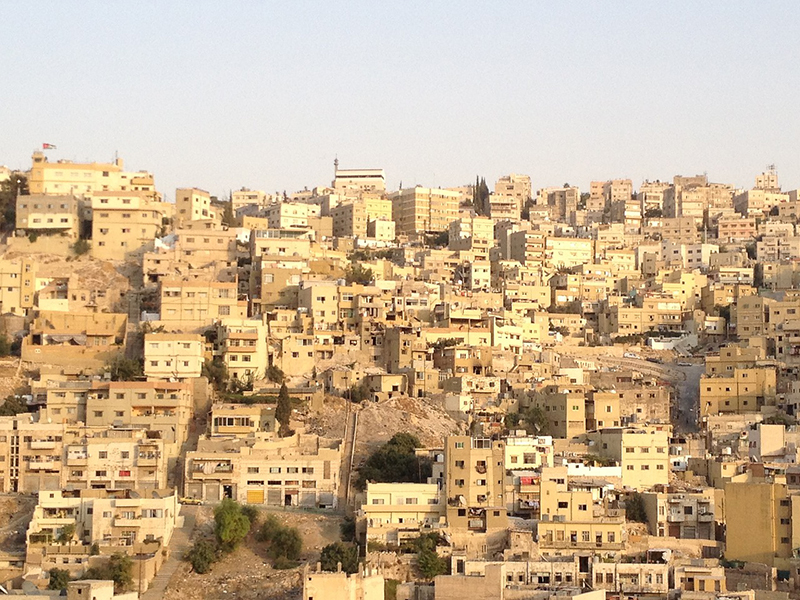
The Hashemite Kingdom of Jordan faces a wide range of hazards ranging from earthquakes, landslides, flash floods, drought, snowstorms to industrial accidents. Rapid unplanned urbanization, with 80% of the population living in cities, together with unsustainable water management practices, are the main drivers of disaster risk. The majority of large cities are located less than 30 kilometers of the Dead Sea Rift, making them highly exposed to earthquake. The unprecedented influx of refugees, which make one third of the population, further compounds the country’s vulnerability to disasters by putting additional strain on natural resources and social and physical infrastructure.
CADRI Engagement
At the Government request, CADRI facilitated an assessment of the disaster risk management system with the view to inform the development of the Disaster Risk Reduction Strategy (2019-2022). Signed by the Prime Minister in December 2018, the Strategy aims at clarifying roles and mandates at the central and municipal levels, strengthening the integration between disaster risk reduction and water and agriculture strategies, enforcing the development of municipal and sector DRR plans, as well as the integration of DRR in the school curriculum.
CADRI Impact
Significant progress was made in implementation. A Drought Monitoring System was established to promote integrated drought mitigation measures across the Ministry of Water and Irrigation, Ministry of Environment and Ministry of Agriculture. A multi-threat assessment was done for the industrial area of Aqaba to protect people, infrastructure and the marine eco-system from technological and industrial hazards relating to the Port activity.
Petra World Heritage site, the first source of tourism revenues for the economy, is highly vulnerable to flash floods, rock falls and earthquake. A key recommendation identified during the CADRI assessment was the reactivation of the Flash Flood Early Warning System. In 2018, the Petra Development and Tourism Region Authority upgraded the system consisting of a set of gages upstream the Wadi Musa sending water level information to the Petra control station thus triggering the activation of contingency measures to ensure the safety of local population, tourists and the conservation of the archaeological site physical integrity.
“The first National Disaster Risk Reduction Strategy (2019-2022) is the culmination of His Majesty King Abdullah’s directives to enhance coordination, consultation and cooperation between official and civil bodies in mitigating disasters”.
Mr. Omar Al Razzaz, Prime Minister and Chairperson of National Centre for Security and Crisis Management Board of Directors.
Namibia
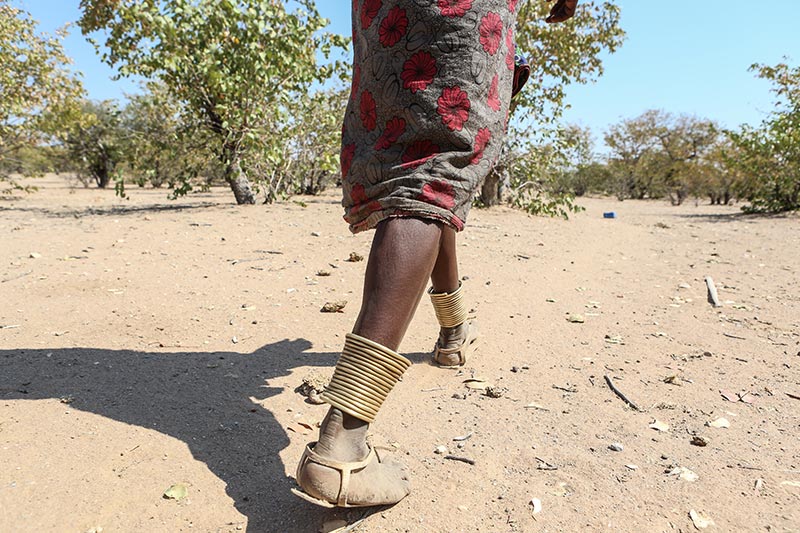
Although Namibia is an upper middle-income developing country with a solid economic and human capital, it is not immune to climate and disaster risk. Food and nutrition insecurity is linked to poverty that is compounded by recurrent natural hazards. Namibia is struggling with water shortage due to drought and limited water reserves.
In March 2016, Namibia declared a state of emergency for the biggest drought in 35 years which affected 30 percent of its population. In 2017, Namibia received rains associated with La Niña phenomenon, causing widespread flooding in the Northern provinces and associated diseases outbreaks.
CADRI Engagement
The cumulative impact of the El Niño and La Niña phenomena propelled the government to reassess its prevention and preparedness capacities. The recommendations of the capacity assessment facilitated by the CADRI Partnership and UNDAC were endorsed by the Office of the Prime Minister in February 2017. This resulted in the development of the National Disaster Risk Management Framework and Action Plan (2017-2021) through a consultative process spanning a period of one year.
CADRI Impact
Aligned with the new government policy, the new UN Partnership Assistance Framework (2018-2023) was developed, integrating DRR and a Joint UN Programme on DRR, ranging from early warning, financing mechanism, to safety nets.
The set-up of a multi-hazard risk information system is underway since 2017 with support from the UN System in Namibia. It consists of an integrated platform bringing together sector-specific data sets which can be used in early warning and preparedness.
This is complemented with the revision of regional multi-hazard contingency and response plans, the planning of simulation exercises, and training on preparedness for response.
Carried out systematically over the past two years as the drought crisis winded down, these capacity development interventions translated into reinforced coordination, most notably between the central and regional levels, reinforced technical skills and competencies, and raised better awareness across various sectoral institutions.
"Expert advice received from CADRI influenced ongoing policy and strategic planning for Disaster Risk Management. Namibia is now in the process of adopting its first National DRM Framework and Action Plan aligned to the Sendai Framework for DRR. This document is of strategic importance to the institutional development of the Directorate DRM, as coordinator of the DRM agenda and placed under the supervision of the Office of the Prime Minister."
Kiki Gbeho - UN Resident Coordinator.
São Tomé and Príncipe
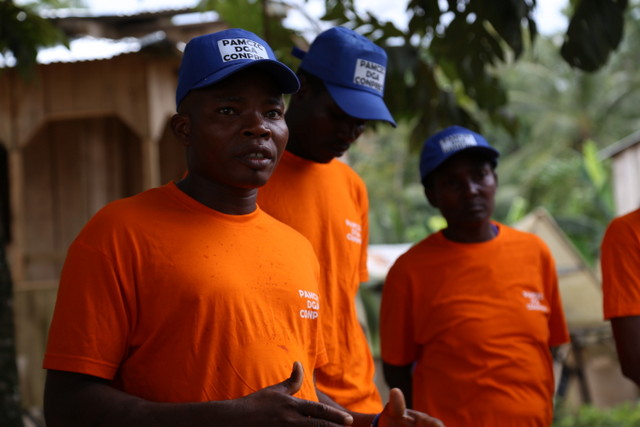
As a small island developing state, São Tomé and Príncipe is the embodiment of coastal communities’ fragility in the face of climate variability and change, which is the cause for the increasing frequency and severity of floods, flash floods and storms. The impacts are particularly critical to agriculture and fisheries sectors, which provide livelihoods to a large part of the population and are the main source of exports revenues (cocoa, coffee and palm oil). Seemingly, investment in tourism infrastructure and services must be protected from disasters and climate change impact.
Acknowledging these challenges, the Government has taken proactive steps to address climate and disaster risk in key sectors such as agriculture, fishery, tourism and health.
CADRI Engagement
The CADRI Partnership together with UNDAC deployed several missions throughout 2015 and 2016 to facilitate an assessment of national and local capacities for better planning in climate and DRR, and reached a consensus on national priorities to address these capacity needs. These priorities have been articulated in the National Framework for Disaster Risk Reduction (2016-2020) which serves as an instrument for tracking and accounting for climate and DRR investment in the country.
CADRI Impact
The CADRI process revealed a consensus across all institutions that São Tomé and Príncipe needed a regulatory framework for DRR that would go beyond emergency response. As a direct follow up, a Parliamentary Commission was established with five Members of Parliament capacitated to review the draft law. In May 2016, the Civil Protection Law was passed which expanded the mandate of civil protection to preparedness and prevention, and established district commissions for civil protection in three regions.
In the aftermath of the CADRI and UNDAC engagement, the Government updated its National Contingency Plan with support from OCHA. Since then, using the acquired skills, the Government has been developing local contingency plans.
The priority interventions identified in the agriculture, fishery and tourism sectors were budgeted in the multi-sectoral investment plan to strengthen resilience to climate and disaster risk in coastal areas supported by the World Bank. Additionally, specific recommendations to enhance early warning systems were implemented including the establishment of 28 hydro meteorological stations covering 60 percent of the territory and the set-up of a forecasting and alert system for fishermen and farmers, with support from UNDP/Global Environment Facility.
"CADRI facilitated continuous discussions about clarification of mission and action of each government body. The country has largely benefited from the CADRI guidance and has improved in diverse ways the relationship between partners […], as well as coordination which already helps avoid duplication of actions. We believe that best practices based on CADRI experience have served to encourage different government entities to have clear interventions in many sectors […] to incorporate risk reduction approaches into the various national plans and programs."
Carlos Mendes DIAS - Coordinator of the National Council for Disaster Preparedness and Response (CONPREC)
Serbia
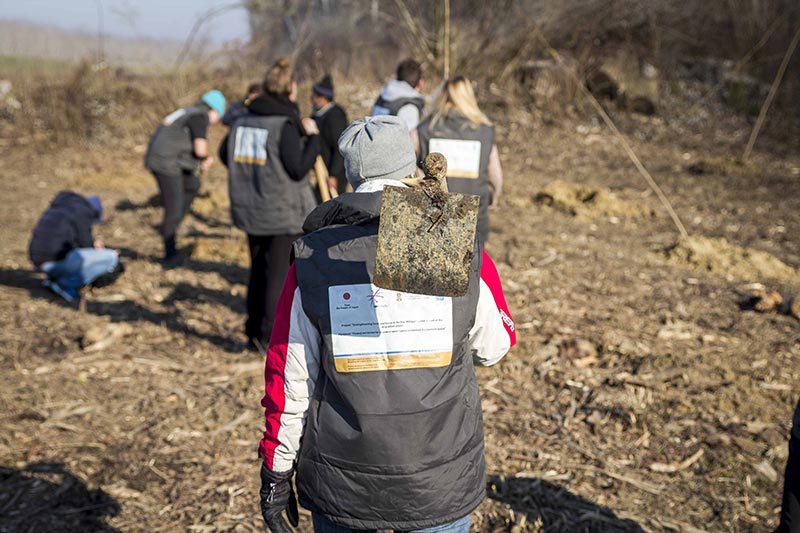
The 2014 flooding in Serbia had catastrophic impact on the welfare of people and the economy, reaching damage with a price tag of EUR 1.7 billion. The destructive floods provided an impetus to the Government to move from a reactive to a more proactive risk reduction and preparedness approach.
The Government seized the opportunity to identify priority actions in building its capacities to reduce the risk of disasters, to be better prepared to respond when disasters occur, and to ensure swift recovery in the aftermath of a disaster. These priority actions have been laid out in the National Disaster Risk Management Programme adopted in December 2014.
CADRI Engagement
In its effort to develop an integrated and comprehensive implementation plan for the National DRM Programme, the Government benefited from technical assistance through the CADRI Partnership throughout 2015 and 2016. As a result, in March 2017, the Government validated the Action Plan for the Implementation of the National Disaster Risk Management Program (2016-2020), the main national instrument that supports the country in attaining the Sendai Framework targets at national level.
Accounting for 9 percent of the country’s GDP, agriculture was prioritized as the most important export sector. The Ministry of Agriculture, Forestry and Water Management was actively engaged in a series of technical training and planning workshops supported by CADRI to define DRM priorities. Key priorities identified range from undertaking vulnerability and risk mapping of floods and forest fires; setting up a database on the movement of animals; mapping and analysis of animal disease risks; and setting up a database for food safety.
CADRI Impact
In 2017, with support from the Food and Agriculture Organization (FAO), the central government, local authorities and agriculture extension services partnered to revise the disaster damage and loss assessment methodology for the agriculture sector. Current procedures were based on laws dating back to 1988. The update of the methodology will therefore allow for a faster assessment of the needs of the affected population, and ultimately for more accurate recovery interventions.
"We needed to shift the focus from being reactive to becoming proactive to work in the peaceful time on prevention. We definitely needed the international partners’ experience and knowledge about how the Action Plan should work in practice and needed it tailor-made for Serbia."
Sandra Nedeljkovic - Deputy Director, National Disaster Risk Management Program, Public Investment Management Office.
"CADRI was able to bring all the experts we needed to assist the government to develop a National Action Plan on how to prevent any future disasters and how to prepare."
Irena Vojackova Sollorano - UN Resident Coordinator.
